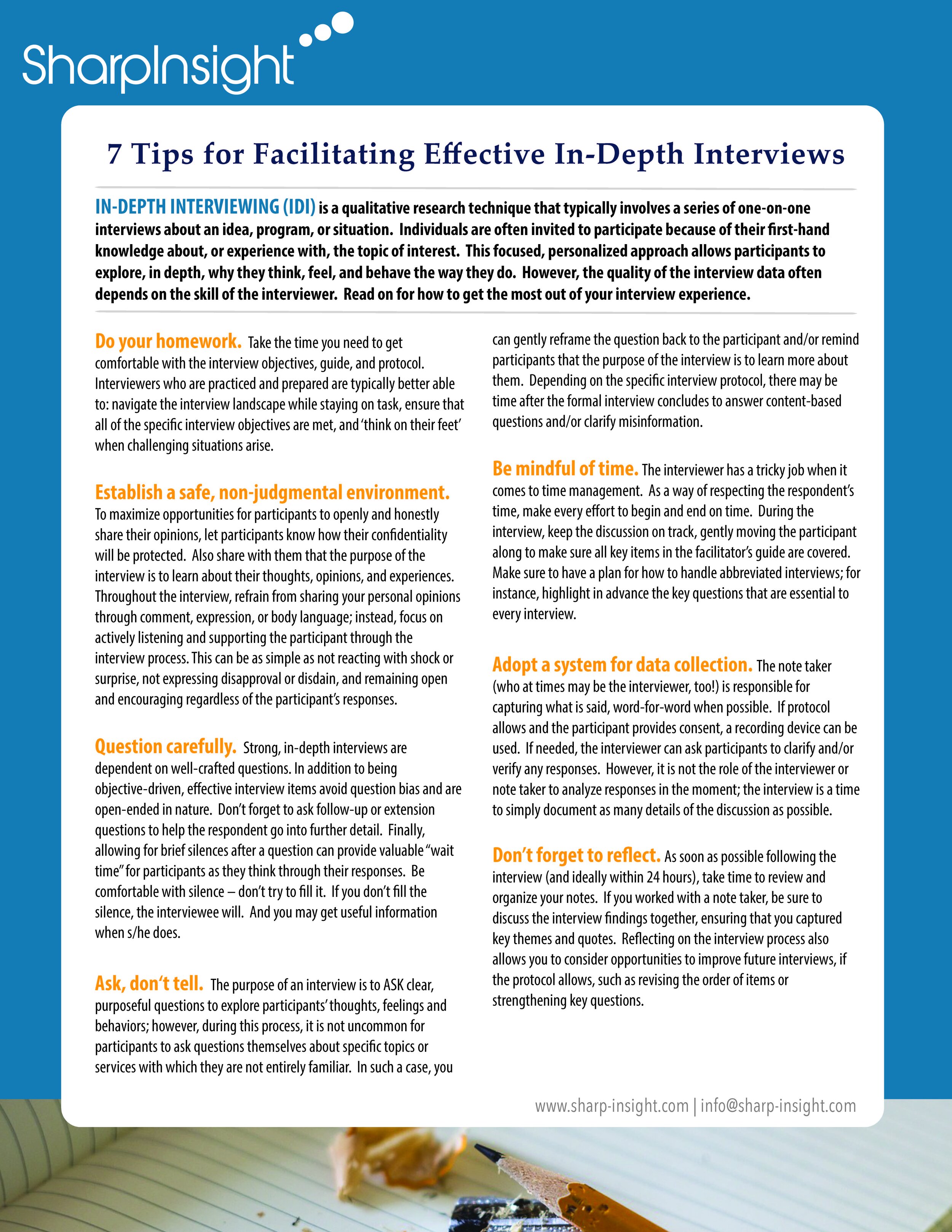In-Depth Interviews
Are you survey-ed out? Or maybe you’re just looking for a way to get feedback that doesn’t feel so… distant? Try in-depth interviews! Particularly during a time when so many of us are feeling disconnected, interviews can be a fantastic data collection opportunity that can simultaneously boost genuine connection with your clients and partners.
So what’s an in-depth interview?
It’s a qualitative research method, which simply means that it’s a way to collect data using words, rather than numbers. In-depth interviews are usually completed as part of a series of one-on-one conversations about an idea, program, or situation. Interviewers typically follow a structured or semi-structured guide to ensure that the experience is consistent and information from multiple interviews can be combined for analysis.
Interviews can be a highly effective way of gathering detailed information from people who have first-hand knowledge about, or experience with, a topic of interest.
This focused, personalized approach allows interviewees to explore why they think, feel, and behave the way they do. It is also a great opportunity to elevate the expertise and opinions of your community members, partners, or clients about issues, strategies, and opportunities for your organization.
If you’re wondering about virtual interviews, the good news is that they aren’t that different from in-person ones! In fact, the 7 tips in our interview facilitation tip sheet apply to both formats. That said, we’re also sharing below 3 additional tips to keep in mind for your next virtual interview series:
1. Make a conscious choice whether or not to use video:
It’s great to see the person you’re speaking with! But keep in mind that video technology isn’t for everyone AND it can create additional considerations (e.g., background, privacy, WiFi speed). When in doubt? Ask your interviewee what they are most comfortable with and take that as your lead.
2. Recording data is even easier, but don’t forget that consent form:
Many virtual platforms have recording options integrated into their systems. That can be a very easy way to capture data in your interview. However, just because it’s easy to hit the “record” button, doesn’t mean you should. Please be sure you have received consent to record the conversation and have discussed how the data will be used and safeguarded throughout the process.
3. Focus on connection from the start:
No, we’re not talking about an internet connection! A virtual interview can feel slightly more distant than an in-person one, so take the time to establish a strong interpersonal connection at the start. Remember that icebreaker and be sure to pay extra attention to your active listening skills – they’ll go a long way!
How can I learn more? Check out our tip sheet or just reach out if you’re considering an in-depth interview series this year!

